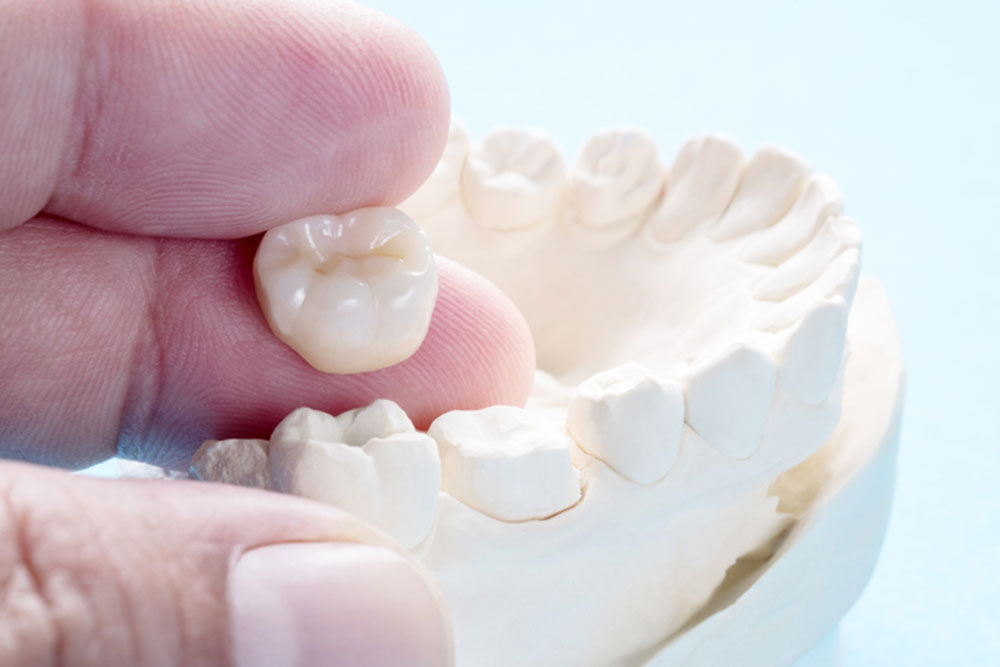
iStock
By Mary Carpenter
DC-BASED FILMMAKER C.L. in the course of a few days lost two crowns—one on each side of her mouth. After two dentists on the West Coast recommended implants, at a total cost of about $10,000, a DC-area dentist proposed using 3D printing, a newer option for both crowns and implants—and recommended starting with the less expensive, less invasive crowns. Total cost: $2,000.
“The potential is, in fact, immense,” German researchers wrote in a recent research report on 3D printing in dentistry. In addition to significantly lower costs to patients of 3D models compared to traditional crowns and implants, 3D-printed items can be created, positioned and even re-tailored in one visit, and they “fit perfectly.” Gone is the need for two visits with an average 10-day wait in between for fabricating the replacement—while wearing temporary crowns that come off easily and can cause sensitivity.
Throughout medicine, the use of 3D printing has “exploded,” according to theconversation. Using plastics and resins similar to those used in dental replacements, “engineers and medical professionals now routinely 3D print prosthetic hands and surgical tools.”
Bioprinting (fabricating “three-dimensional structures of biological materials, from cells to biochemicals) [has as its] ultimate goal to replicate functioning tissue and material such as organs, which can then be transplanted into human beings,” theconversation notes. While connecting bioprinted structures to vascular systems that carry blood and lymph remains challenging, bioprinting has successfully created nonvascularized tissue like cartilage, as well as scaffolding that can support bone; and researchers have made but not yet transplanted human heart valves.
Creation of regulations to oversee the field of 3D printing for dentistry has lagged, however, and there is a lack of long-term research particularly on the safety of artificial resins and plastics. “There is only little data regarding the behavior of 3D printed devices or restaurations in the oral cavity,” according to the German researchers. “Data on plaque formation, elution (chemical extraction process) behavior, and general biocompatibility of 3D printed polymer materials are scarce…further data on specific materials are urgently required.” In addition, 3D printing has a slightly higher risk of infection for some individuals.
But compared to traditional dental replacements, 3D printed crowns and implants have greatly improved fit due to the “additive manufacturing” (AM) process of 3D printing. While the traditional process involves cutting away from a model made from a mold, AM allows practitioners to better tailor the item during the single visit by continuing to add layers of material.
First the dentist uses an intraoral scanning wand to make a 3D digital impression of the mouth and then operates the milling unit to produce the crown. Afterwards, the dentist paints and glazes each tooth to match the other teeth —in appearance, as well as the way it feels—and then bonds the crown into the mouth.
“Recent pricing guides have seen up to an 80% savings for patients in practices that use in-house dental 3D printing for their crowns and prosthetics,” according to 3dsourced, which deems crowns “perhaps the most versatile of dental procedures.” Crowns can strengthen a weak tooth, bridge and fill gaps and cracks, and act as replacements for broken or chipped teeth.
And single crowns are increasingly the best option for replacing a missing tooth—for the 120 million Americans who are “partially edentulous,” missing at least one tooth; in addition to more than 36 million who are completely edentulous,” according to Market-Reports. Producing crowns by 3D-printing makes them “far more reliable” than machined crowns, which can fall out because of subpar materials or improper fitting. Both traditional and 3D-printed crowns usually last 10 to 15 years.
Traditional crowns “have become outdated” since the development of the CEREC (Chairside Economical Restoration of Esthetic Ceramic), the “cool kid on Dentist Street,” according to New Jersey-based Stiles dental practitioners. Among drawbacks of traditional crowns are the materials, a combination of porcelain, gold, and/or silver fused to metal—because porcelain is prone to chipping and cracking, compared to ceramic and resin materials used in the CEREC crown.
“The pace of development in digital dental manufacturing has become impressive,” write the German researchers. Using the Gartner analysis “hype cycle,” 2014 predictions placed “full adoption” of 3d printing at 10 to 15 years.” Current obstacles include the dearth of training programs for AM and the costs of installing 3D printing facilities, as well as of the software and materials required. Dentists most likely to offer 3D printed-items are younger and working in group practices—which are on the rise. By 2017, only one in five dentists below 35 years of age in the U.S. worked in a solo practice.
For dentistry’s future, researchers are working on individual “biomimetic typodont” (artificial) teeth—grappling particularly with the challenges of recreating the mechanical functions of the human tooth, such as tactile feedback needed for accurate fitting and placement, according to British researchers. Using novel composites—for example, of glass and porcelain—typodont teeth have proved “mechanically comparable to extracted teeth.”
For bioprinting in medicine, the goal is transplantable organs—notably kidneys, desperately needed to cope with an extreme shortage of donated organs. And some have drawn parallels to cloning, predicting a future of “cloneprinting”—not just organs to help with the transplant shortage, but onto new possibilities for reviving extinct species.
Despite the lack of long-term research, advantages including the lower price, precision milling, and faster creation of 3D printed dental crowns and implants will, if the need arises, entice me away from my current dental-practice relationship of many years. At that point, I will need to look at updated reports and research on longer experiences with 3D printing, with particular focus on possible risks of the artificial materials involved.
—Mary Carpenter regularly reports on need-to-know topics in health and medicine.

What an advance in dentistry! I may need a new crown very soon. I’m checking with my dentist on this.